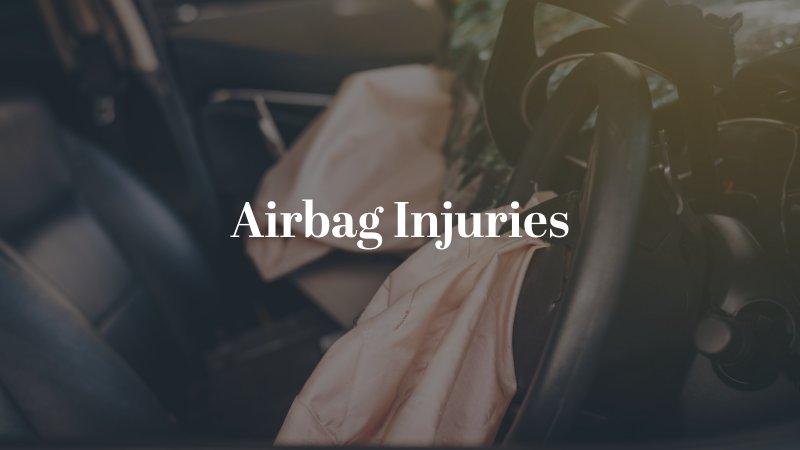Airbags are a life-saving safety tool that cars are required to have. However, with their great life-saving capacity comes the potential for danger. While they certainly help minimize the impact of collisions, airbags can deploy with great force and cause lasting damage. This is especially true if they misfire and deploy without a crash occurring.
Victims of airbag injuries have a legal right to hold responsible parties accountable. Our Denver car accident lawyers can help.

What Are the Most Common Airbag-Related Injuries?
Airbags can lead to various injuries, even when they operate as designed. Common airbag injuries include:
- Chest injuries due to impact force
- Burns resulting from airbag fabric rubbing on the skin
- Concussions
- Traumatic brain injuries
- Eye injuries and skull fractures if the airbag contacts the face
- Internal bleeding if the airbag impact damages organs
- Hearing loss
- Injury to pregnant women and their fetus
- Lacerations if sharp metal pieces are ejected with the airbag
- Neck or back injuries
- Whiplash
Because of how they work, airbags may cause many injuries. Once a vehicle crash sensor detects an impact warranting airbag deployment, the airbag will deploy with tremendous force and speed.
Defective Airbags
The risk of an airbag-related injury significantly increases if the airbag is defective. While defective airbags are usually created unintentionally, they always endanger drivers and passengers. A manufacturer that negligently manufactures a faulty airbag can be held liable for its actions. Common airbag defects include:
- Marketing Defects: This type of defect occurs when manufacturers fail to adequately warn about the dangers associated with their product.
- Manufacturing Defects: When airbags are produced incorrectly, the results can be devastating. This type of defect often occurs due to production process errors. Examples include the use of substandard materials or the lack of quality control measures.
- Design Defects: A design defect occurs when a product is inherently unsafe, regardless of production technique. For example, if an airbag is designed to be created using a material that is more prone to cutting through skin, the airbag will cause harm regardless of the production process.
Understanding the various defects present in airbag accidents can help you assess whether you have a valid product liability claim against the manufacturer of the product.
What Legal Options Do I Have After an Airbag Injury?
If an airbag has injured you, you have legal options available. After ensuring your health and safety are in check, consulting with an experienced Colorado airbag accident attorney is a good idea. Here’s what an attorney can do for you:
An attorney will investigate your case. After an airbag injury, your attorney can pull together evidence, like accident reports and signs of a defective airbag, to determine if you have a solid legal claim.
An attorney can negotiate with insurance companies. Attorneys know what tactics insurance companies use to minimize claim value. A skilled attorney will aggressively negotiate with insurance companies to reach a just settlement.
An attorney will represent you at trial. If necessary, a dedicated attorney will present your case to the jury. Look for a firm with a reputation for record-breaking jury verdicts.
Denver Airbag Injury Attorneys
Have you been injured by an airbag? Legal help is available. At Dulin McQuinn Young, our Denver car accident attorneys have 20-plus years of trial experience and have achieved record-breaking jury verdicts for personal injury victims throughout Colorado. Contact us today for a no-cost consultation.